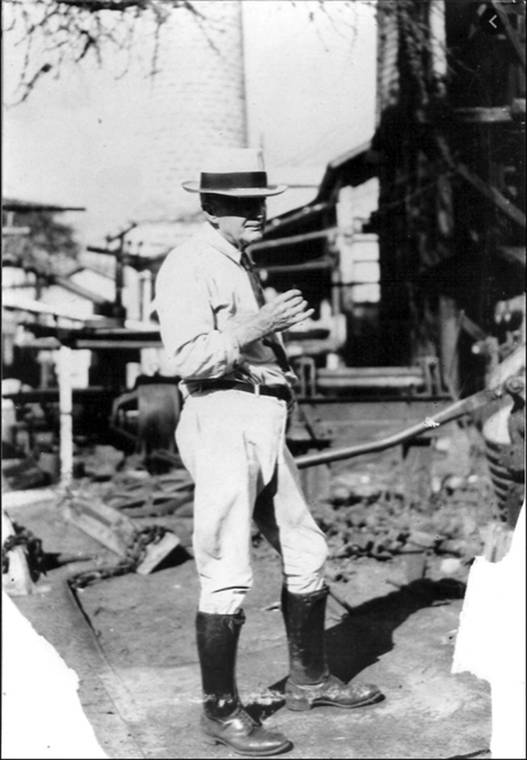Born and raised in Norway, H. P. (Hans Peter) Fayé (1859-1928) arrived in the Hawaiian Kingdom in 1880, and soon after leased land at Mana from his uncle, Valdemar Knudsen, and settled there.
He then cleared the plain at Mana of giant lava rocks, obtained seed cane from Otto lsenberg of Kekaha Plantation and from Meyers & Kruse, who farmed land between Waiawa and Pokii, west of Kekaha, and planted his first crop.
It was during this time, also, that H. P., became a friend to many Hawaiians living at Kekaha and in the now vanished west Kauai villages of Mana, Pokii, Kaunalewa, and Kolo.
In fact, H. P. spoke practically nothing but Hawaiian in those early days, and nearly all his friends were Hawaiians.
In the winter rainy season, he would sometimes travel with them in low-bottomed canoes upon the inland sea that stretched, at that time, from Kekaha nearly to Mana.
And, when he fished with Hawaiians at sea, he became fascinated by their intimate knowledge of the ocean, and fishing, and all things related to nature.
While building his plantation, H. P. asked these Hawaiians where he might find good irrigation water, and they, in turn, took him to a kahuna, a blind Hawaiian who could find water by feeling.
The blind man found a place where H. P. dug his first artesian well, and for many years, subterranean water from that well and other artesian wells was all the water H. P. needed to irrigate his cane fields.
In 1886, when H. P.’s first crop was ready to harvest, rice farmer Leong Pah On rented H. P. his Chinese laborers to harvest the cane, and the cut cane was sent by bullock teams into Kekaha, where it was processed at the Kekaha Plantation mill.
H. P. married Margaret Lindsay in 1893 and they would have eight children.
When H. P.’s Mana sugar company consolidated with Kekaha Sugar Company in 1898, he became its manager, a position he held for thirty years.



1886. They were still under the old Hawaiian Kingdom. They employed all kinds of workers. Hawaiians, Japanese, Portuguese, Chinese, that came to Hawai’i. But mainly Hawaiians. Still recognized was the Hawaiian Kingdom under King David Kalakaua. But in Honolulu. I think the town has grown into a community of about 5,000 people. So there are that many people in that town. It has grown from a plantation community to a town. I am not sure if there are many Hawaiians still in that town. But there still some. Also I think it has remained relatively the same throughout. 5,000 people to about 70,000 people in the island. That is the percentage. Not that small and not that big.